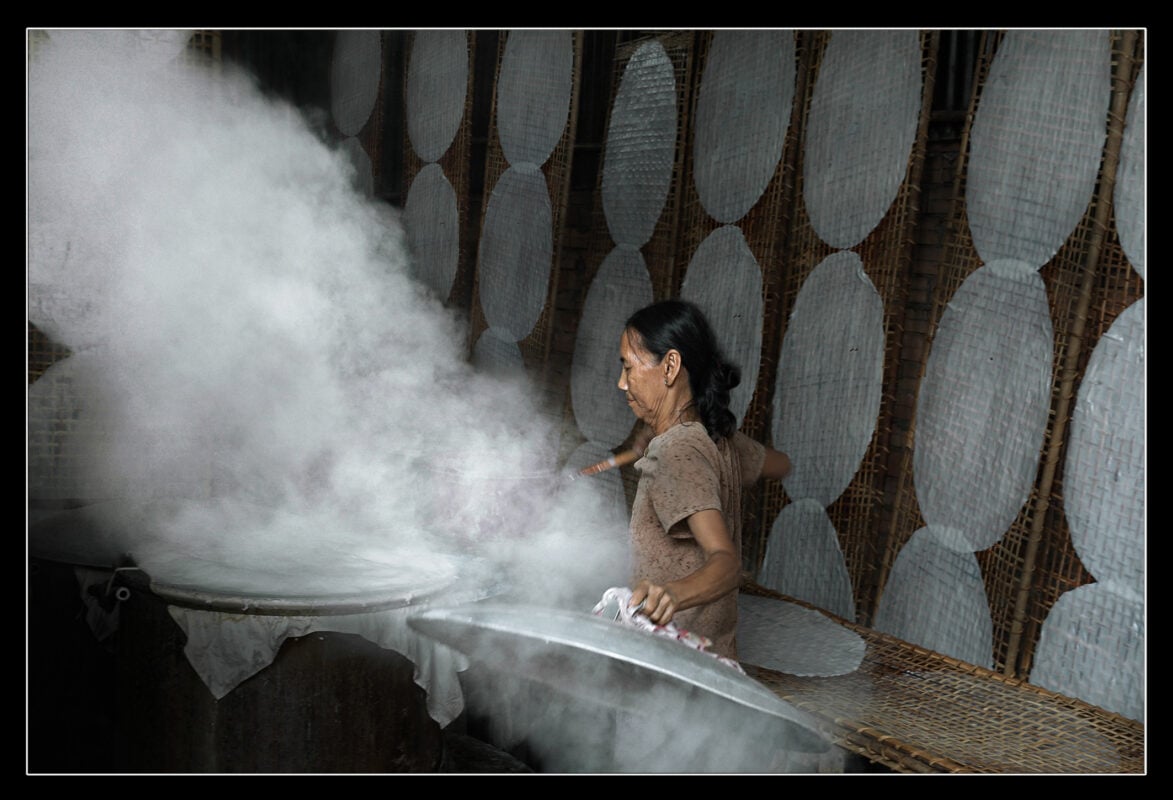
In the agricultural cultural space of the Vietnamese people, traditional crafts are not only a means of livelihood but also a place to preserve folk knowledge, reflecting the identity and working spirit of the community. Among the myriad of traditional crafts, rice paper making – seemingly simple and rustic – crystallizes the ingenuity, perseverance and love for the homeland of Vietnamese women.
From the early mornings around the red-hot stove, they diligently spread each thin layer of rice cake, watch the fire, dry it in the sun, and pay attention to every small detail to create a chewy product with the sweet aroma of rice. Each cake is the result of skillful hands, a testament to the perseverance and creativity of women - the ones who have been keeping the soul of the traditional profession alive for generations.
For the rice paper making profession, women are the main labor force. Walking along the rice paper craft villages such as Trang Bang (Tay Ninh), Phu Hoa Dong ( Ho Chi Minh City), An Ngai (Long Dien, Ba Ria Vung Tau, now Ho Chi Minh City), we can easily see the familiar image of women busy at the rice paper kilns, their hands deftly and meticulously creating each thin, flexible, white rice paper, silently preserving and breathing life into a long-standing traditional craft of the nation.
Each rice paper looks simple, but to make a perfect one is the result of meticulousness and perseverance. From choosing good rice, grinding the flour to the right degree, spreading the rice paper thinly without tearing, to drying it in the sun just enough to make it chewy – all require delicate hands and experienced eyes, and in many places, only women can take on the responsibility.
For the rice paper craft villages of Phu Hoa Dong and An Ngai, each family's rice paper oven usually includes a rice soaking area, a rice mill, a rice paper oven and a cake baking oven. Every early morning, smoke from the ovens wafts out, mixed with the strong aroma of new rice. Women have to wake up at 1 a.m. to wash the rice, grind the flour and light the oven to make the rice paper. To make soft, supple rice paper, which tastes sweet, rich and rich, the most important thing is to choose the rice. The rice used to make the rice paper must be regular rice. After being soaked thoroughly, the rice is ground into flour and mixed to ensure the right consistency and adhesion. The success or failure of each batch of rice paper depends on the flour mixing stage. Dry or soggy flour will spoil the rice paper and the maker will lose money. Regarding the temperature when making the rice paper, they have to keep the fire steady, hot enough, make the rice paper thin but not torn, then dry the rice paper in enough sunlight, so that the rice paper dries evenly, does not warp, does not break so that the rice paper is both soft and fragrant.
With the traditional method, when making the cake, the diligent woman uses a coconut shell to scoop each ladle of rice flour and spreads it evenly on a cloth stretched over a large pot containing water inside, making the dough into a thin and round layer, then covers it, waiting for the steam to cook it. At this stage, the skilled worker must be very meticulous and agile to get the standard results. After the cake is cooked, the worker must immediately use a tube with a light wire, remove it and spread it on a bamboo woven tray to dry. Under the harsh sun of the South, we can vaguely see the silhouette of a Vietnamese woman - silently, persistently watching each layer of cake, drying each sheet of rice paper - a seemingly simple job but requiring precision down to every detail.
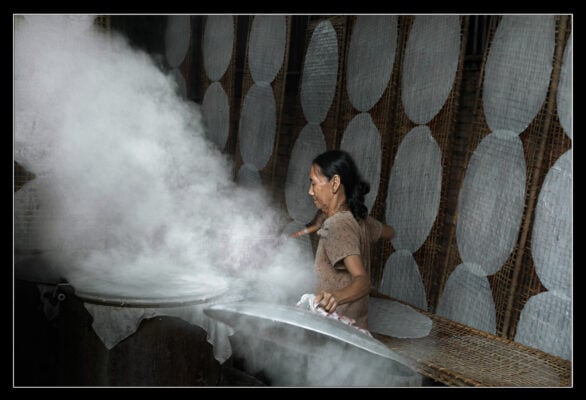
Work: Rice paper, author: Dang Thi Kim Phuong
In addition, Trang Bang rice paper village is unique because of the dew-dried rice paper - a unique creation from the natural conditions here, creating a soft, supple, delicious cake. For Trang Bang dew-dried rice paper, two layers of dough will be spread on top of each other, not one like the usual cakes. When the cake is cooked, it will be taken out onto a bamboo tray and dried in the light sun for 30 minutes to 1 hour depending on the weather. When the rice paper is dry and slightly flaky, the woman will remove it and grill it over a fire. If the selection of ingredients and the rice paper coating create a delicious taste, the baking and dew-dried stages will make the difference of Trang Bang rice paper. The griller needs to be very meticulous and agile, constantly turning it back and forth so that the cake expands evenly and must watch so that the rice paper is just cooked, the two layers of dough do not peel off. The grilled rice paper will be brought out to dry in the dew from about 9 - 10 pm or 2 - 3 am. When the dew makes the rice paper soft enough, fold it, put it in a bag and tie it tightly to prevent air from entering and making the rice paper hard. The most difficult thing about the job of making rice paper in Trang Bang is that the women have to sit for hours next to a red-hot fire, staying up late every day and waking up early to get enough dew for the rice paper to reach the right quality. That is why each rice paper exposed to dew contains all the quintessence of heaven and earth and the efforts of the artisan, and is a symbol of the culture of labor and local identity.
Rice paper has always been associated with Vietnamese cuisine from North to South. Depending on the region, people combine and prepare countless delicious dishes with this unique cake. In addition, rice paper is also created by people in many different types of cakes: grilled rice paper, spring roll rice paper, sesame rice paper, chili rice paper, mixed rice paper, salt rice paper, rice paper rolls... Therefore, it can be affirmed that rice paper is not only delicious to eat but also an indispensable spiritual dish of the Vietnamese people, serving both culinary and commercial needs.
In the journey of preserving and developing the rice paper making profession, women play a central role. They are not only the main workers, directly performing each stage, but also the ones who pass on the passion to the next generation. With experience, family secrets and ingenuity, grandmothers and mothers have guided their children and grandchildren, creating the unique flavor of the craft village.
Not only do they play a production role, women also play an important role in economic development. Many have boldly started businesses and innovated by applying machinery, improving drying and packaging processes, building their own brands and participating in e-commerce. Thanks to that, many craft villages have created stable jobs, improved living standards and promoted local tourism.
In the context of many handicrafts being gradually forgotten, preserving the rice paper craft is not only to preserve a unique culinary beauty but also to maintain the community identity. Thanks to the efforts to preserve and promote, many famous rice paper craft villages such as Trang Bang (Tay Ninh) and An Ngai have been recognized by the Ministry of Culture, Sports and Tourism as National Intangible Cultural Heritage.
The rice paper making profession has become a symbol of the beauty of Vietnamese labor and people, where women keep the spirit of the homeland alive. Through each thin layer of rice paper, we can feel the sweetness of rice, the saltiness of sweat, and the warmth of human hearts. These values are created only by the skillful hands, patience and love of women for their profession. Through this, Vietnamese women not only affirm their economic role but also contribute to promoting the image of their homeland and country.
Ho Chi Minh City, October 27, 2025
Huynh Thi Kim Loan
Department of Communications - Education - International Relations
References
- Tran Ngoc Diep (2005), Trang Bang dew-dried rice paper – Southern Land and People, volume III, Tre Publishing House
- Pham Huu Thang Dat (2002), Stories of craft villages in Quang land, Da Nang Publishing House
- https://vntravel.org.vn/net-dep-lang-nghe-banh-trang-phu-hoa-dong-giu-lua-nghe-xua-a2337.html
- https://vaas.vn/kienthuc/Caylua/12/09_banhtrang.htm
- https://www.vntrip.vn/cam-nang/du-lich-lang-nghe-banh-trang-an-ngai-o-ba-ria-vung-tau-698
Source: https://baotangphunu.com/phu-nu-nam-bo-trong-bao-ton-va-phat-huy-nghe-banh-trang-truyen-thong/



![[Photo] The 5th Patriotic Emulation Congress of the Central Inspection Commission](https://vphoto.vietnam.vn/thumb/1200x675/vietnam/resource/IMAGE/2025/10/27/1761566862838_ndo_br_1-1858-jpg.webp)




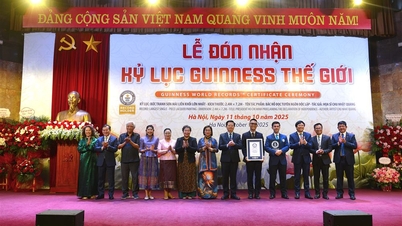
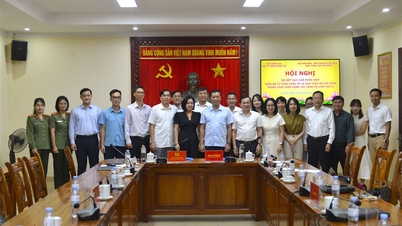
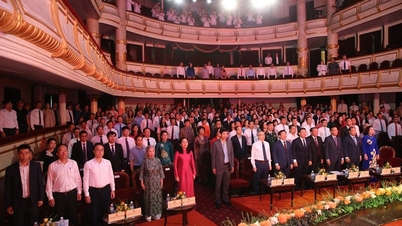


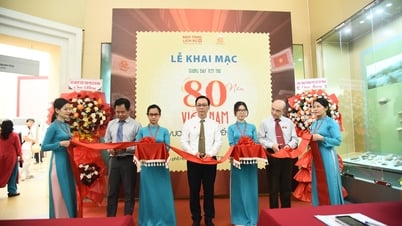





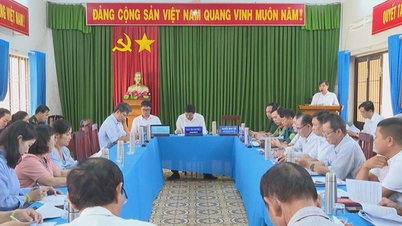

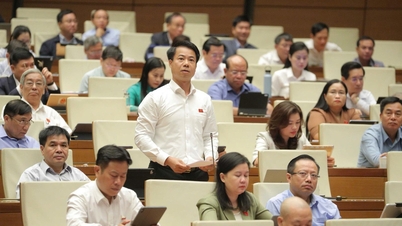
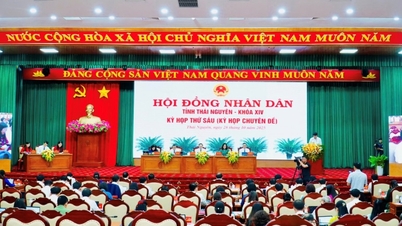
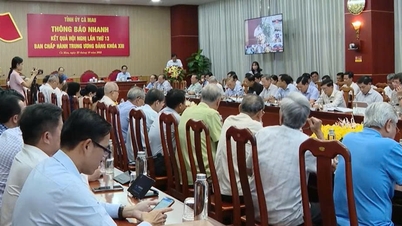
![[Photo] Party Committees of Central Party agencies summarize the implementation of Resolution No. 18-NQ/TW and the direction of the Party Congress](https://vphoto.vietnam.vn/thumb/1200x675/vietnam/resource/IMAGE/2025/10/27/1761545645968_ndo_br_1-jpg.webp)
![[Photo] National Assembly Chairman Tran Thanh Man receives Chairman of the House of Representatives of Uzbekistan Nuriddin Ismoilov](https://vphoto.vietnam.vn/thumb/1200x675/vietnam/resource/IMAGE/2025/10/27/1761542647910_bnd-2610-jpg.webp)


















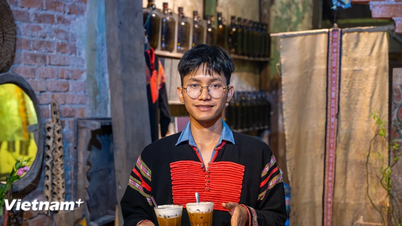







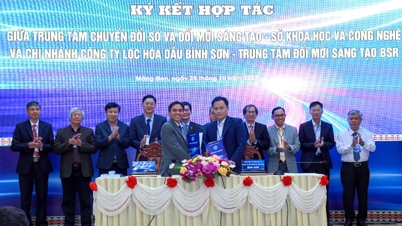










![[Photo] Prime Minister attends the 28th ASEAN-China Summit](https://vphoto.vietnam.vn/thumb/402x226/vietnam/resource/IMAGE/2025/10/28/1761624895025_image-2.jpeg)






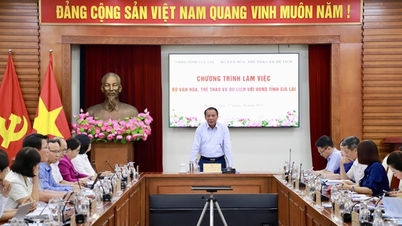

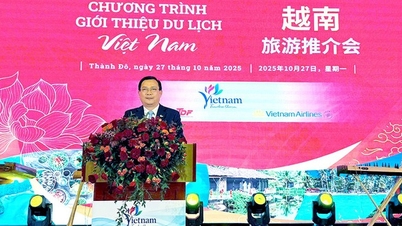





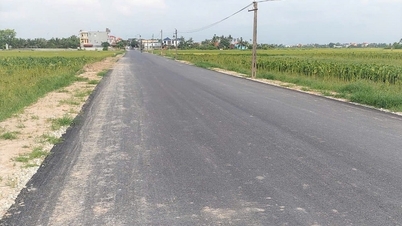



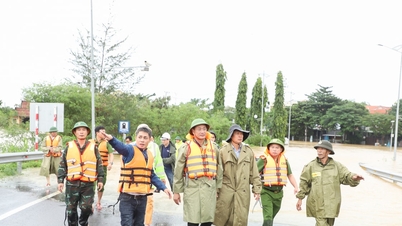

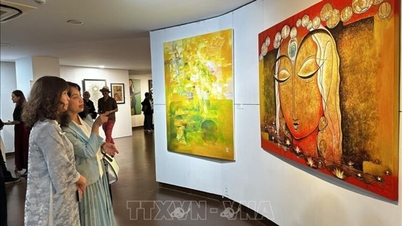
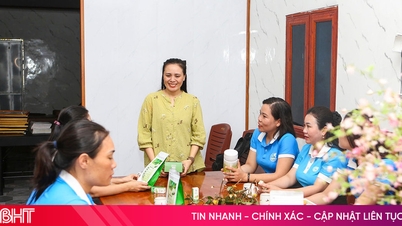

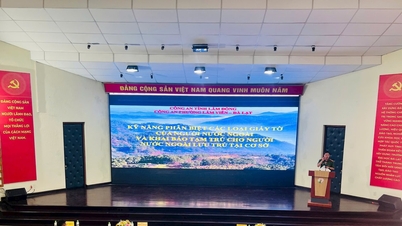















Comment (0)